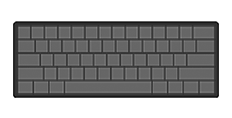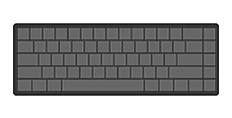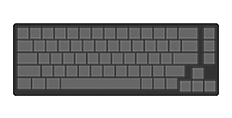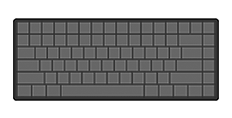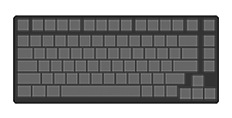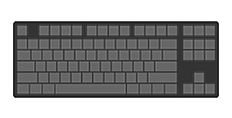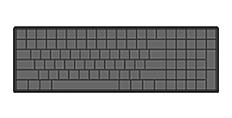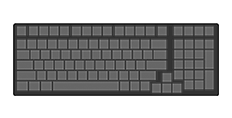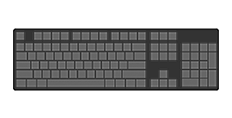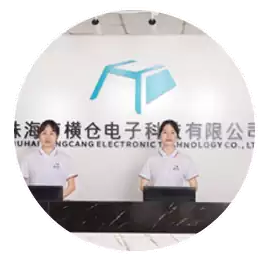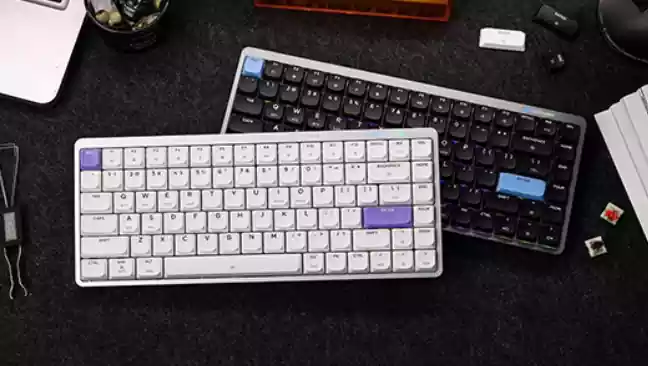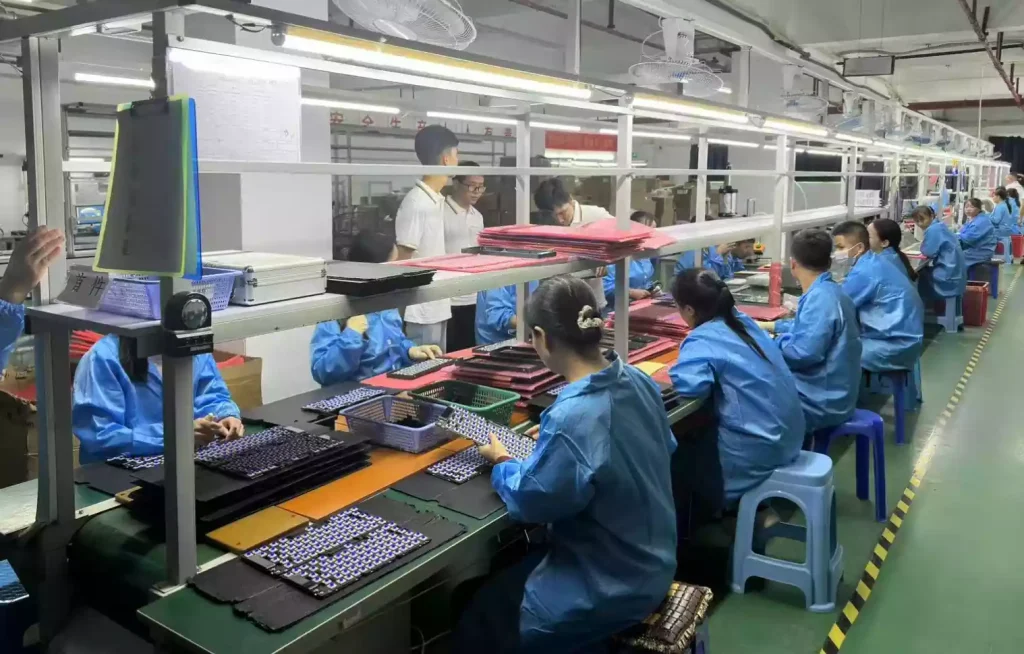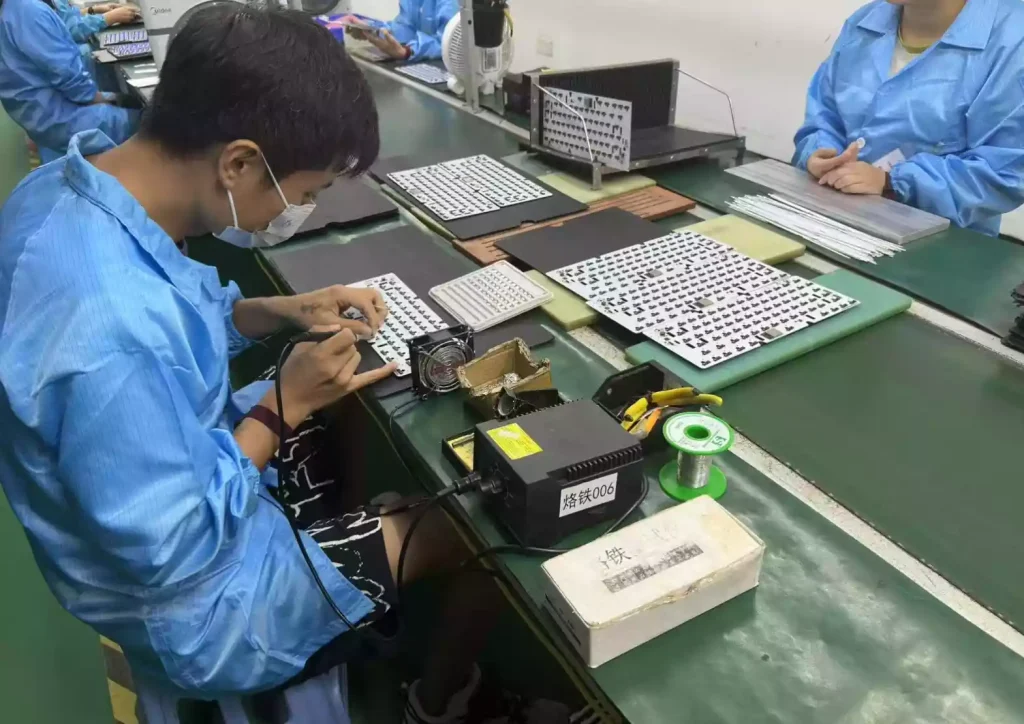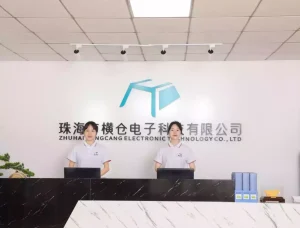From Contract Manufacturing to Independent Design: The Transformation of a Mechanical Keyboard Enterprise
In the competitive landscape of mechanical keyboard production, OEM (Original Equipment Manufacturing) and ODM (Original Design Manufacturing) stand as the two most prevalent collaboration models—shaping the division of responsibilities between brands and manufacturers, and defining the boundaries of innovation. Zhuhai Hengcang Electronic Technology, an innovative enterprise boasting 19 patented technologies, has accumulated profound expertise in both models while steadily advancing toward the OBM (Original Brand Manufacturing) phase. This evolution not only reflects its adaptability to market demands but also showcases its commitment to elevating China’s manufacturing capabilities to "China’s creation."
The Fundamental Differences Between OEM and ODM
To understand Hengcang’s strategic choices, it is first critical to clarify the core distinctions between OEM and ODM—two models that serve distinct brand needs but share the goal of delivering high-quality mechanical keyboards.
1. Core Differences in Collaboration Models
The essence of OEM and ODM lies in the degree of involvement in product design and production control.
OEM: Manufacturer as a "Precision Executor"
In the OEM model, the brand party provides a complete product design blueprint and strict specification requirements, while the manufacturer focuses solely on executing production in line with these standards. This is analogous to the collaboration between Apple and Foxconn: the brand holds absolute decision-making power over product features (e.g., keyboard layout, material selection, and functional modules), and the manufacturer’s role is to ensure mass production meets the brand’s global quality benchmarks.
For Hengcang Electronic Technology, its OEM services excel in "precision execution." For instance, when partnering with a leading global peripheral brand (specializing in gaming and office keyboards), Hengcang adheres to the brand’s detailed design requirements—from the 0.1mm tolerance for keycap alignment to the specific lifespan testing standards for mechanical switches (requiring 50 million keystrokes without failure). The company’s automated production lines, combined with manual quality checks at 12 critical stations, enable monthly OEM output of over 100,000 units while maintaining a defect rate below 0.03%.
ODM: Manufacturer as an "End-to-End Solution Provider"
In contrast, the ODM model empowers manufacturers to participate in both product design, development, and production. The brand party only needs to outline broad market demands (e.g., "a lightweight mechanical keyboard for gaming enthusiasts" or "a durable office keyboard with wireless connectivity")—and the manufacturer leverages its technical reserves to propose mature, customizable design schemes.
Hengcang’s ODM strength lies in its ability to translate brand needs into tangible, competitive products. For example, when a fledgling gaming brand approached Hengcang with a demand for "a portable mechanical keyboard under 800g," the company proposed two solutions:
- Solution 1: Adopt a patented carbon fiber base (reducing weight by 35% compared to traditional plastic bases) and Cherry MX Red linear switches, targeting speed-focused gamers.
- Solution 2: Use a lightweight aluminum alloy shell (via Hengcang’s patented extrusion molding process) and Gateron Brown tactile switches, catering to users who prioritize typing feedback.
The brand ultimately selected Solution 1, which launched in the European market and achieved monthly sales of 15,000 units within three months—thanks to Hengcang’s ODM efficiency in shortening the product development cycle from 6 months to 3 months.

2. Ownership and Application Boundaries of Intellectual Property
Intellectual property (IP) is the defining line between OEM and ODM, directly impacting how designs can be reused and how profits are distributed.
OEM: Brand Retains Full IP Ownership
In OEM partnerships, the brand party owns 100% of the product’s intellectual property rights—including design patents, functional patents, and appearance trademarks. The manufacturer is strictly prohibited from sharing or reusing the brand’s design for third-party clients. For example, Hengcang’s OEM collaboration with a North American office equipment brand requires the company to store all design files in a password-protected system, with access limited to 5 authorized personnel. After production ends, all unused components (marked with the brand’s exclusive logo) are destroyed to prevent IP infringement.
ODM: Manufacturer Owns Core Design IP
In ODM projects, the manufacturer typically retains ownership of the core design intellectual property (e.g., structural patents, process patents), while the brand purchases the finished product for private labeling. This means Hengcang can adapt its existing patented technologies (e.g., aluminum alloy shell extrusion, carbon fiber base design) for multiple ODM clients—provided the final product is customized to the client’s brand identity (e.g., unique colorways, logo engraving).
For instance, Hengcang’s patented "one-piece keyboard shell molding process" has been used in ODM projects for 3 different brands: a student-focused brand adopted it for a budget-friendly model (simplifying the shell to reduce costs), a premium brand added RGB light strips to the shell (enhancing aesthetics), and a rugged electronics brand reinforced the shell with anti-drop buffers (targeting outdoor workers). This flexibility not only reduces R&D costs for clients but also maximizes the value of Hengcang’s IP portfolio.

Hengcang Electronic Technology’s Manufacturing Strength: Patents as the Foundation
Since its establishment in 2018, Hengcang has secured 19 patents (5 design patents, 8 utility model patents, and 6 invention patents) covering key areas of mechanical keyboard production—from switch fixing structures and integrated shell molding to wireless signal optimization. These patents form the backbone of its OEM and ODM services, enabling the company to meet diverse client needs while maintaining technical leadership.
1. OEM Capabilities: Precision in Mass Production
Hengcang’s OEM services are built on "standardization + flexibility." While adhering strictly to client designs, the company also optimizes production processes to improve efficiency and reduce costs—without compromising quality.
- Material Control: For a European brand’s OEM project requiring "food-grade ABS keycaps," Hengcang sources raw materials from certified suppliers (e.g., Sabic in Saudi Arabia) and conducts 3 rounds of testing (toxicity, wear resistance, color fastness) before production.
- Process Optimization: To meet a client’s demand for "100,000 units/month," Hengcang upgraded its automated assembly lines to include AI visual inspection (detecting keycap misalignment in 0.5 seconds) and automated switch soldering (reducing manual errors by 80%).
- Quality Consistency: Every OEM keyboard undergoes a "triple test" before shipment: 500-keystroke feel testing, 24-hour aging testing, and wireless signal stability testing (for wireless models). This ensures that products meet the brand’s standards across batches.
2. ODM Advantages: Differentiation Through Patented Technologies
Hengcang’s ODM services stand out for their ability to deliver "technical differentiation"—helping emerging brands compete with industry giants by leveraging the company’s unique patents.
Highlight 1: Carbon Fiber Keyboard Patent
Hengcang’s patented carbon fiber keyboard base addresses a key pain point for gamers: "heavy keyboards reduce portability." By replacing traditional plastic bases with carbon fiber (a material 5 times stronger than steel but 1/3 the weight), the company’s ODM keyboards weigh as little as 650g—30% lighter than comparable models. A Southeast Asian gaming brand using this technology reported a 40% increase in sales among mobile gamers.
Highlight 2: Aluminum Alloy Extrusion Shell Patent
Hengcang’s proprietary aluminum alloy extrusion process enables the production of "one-piece keyboard shells"—eliminating the need for multiple assembled parts and improving structural stability by 50%. For a corporate client needing "durable office keyboards," this process reduced shell breakage rates from 2% to 0.1% and extended the product’s lifespan to 7 years.
Highlight 3: Customizable Feel Tuning
Building on its expertise in manual switch lubrication (a core strength highlighted in previous processes), Hengcang offers ODM clients "tailored tactile feedback." For example:
- Linear switches: Light lubrication (using Miller 3204 grease) for smooth, fast actuation—ideal for gamers.
- Tactile switches: Moderate lubrication (using DuPont 105+205 mixed grease) to preserve the "bump" feel—perfect for office users.
This attention to detail has made Hengcang’s ODM services popular among niche brands, such as a Japanese typing-focused brand that saw a 25% increase in repeat customers after adopting Hengcang’s feel-tuning.

3. Flexible Collaboration Models for Diverse Clients
Hengcang tailors its collaboration model to the client’s size, market position, and resource needs—ensuring maximum value for both parties:
| Client Type | Collaboration Model | Core Advantages for Clients | Hengcang’s Value Proposition |
|---|---|---|---|
| International Brands (e.g., top 10 global peripheral brands) | OEM | Strict adherence to global standards, mass production capacity | Precision execution, 0.03% defect rate, on-time delivery rate >99% |
| Emerging Gaming/Office Brands | ODM | Shortened R&D cycle, low upfront investment | Turnkey solutions (design→prototyping→production), patented differentiation |
| Niche Custom Brands (e.g., artisan keyboard makers) | Hybrid ODM-OEM | Customizable designs with standardized production | Flexible small-batch production (minimum 500 units), custom material options |
From OEM/ODM to OBM: Hengcang’s Exploration of Independent Branding
While OEM and ODM remain Hengcang’s core businesses, the company has begun exploring OBM—creating and operating its own mechanical keyboard brand. This transition represents a strategic shift from "manufacturing for others" to "building its own market identity"—a challenge that also promises higher profit margins and brand equity.
1. The Challenges and Opportunities of OBM
For a manufacturer long focused on B2B services, OBM presents unique hurdles:
- Brand Awareness: Unlike established brands, Hengcang’s OBM products lack market recognition—requiring investment in marketing and user education.
- Channel Management: The company must build new sales channels (e.g., e-commerce platforms, offline specialty stores) instead of relying on client distribution networks.
- User Feedback Loops: OBM requires direct engagement with end-users to refine products— a departure from the B2B model where feedback comes only from brands.
However, OBM also offers significant opportunities:
- Higher Profit Margins: OBM products typically yield 2-3x the profit margin of OEM/ODM (e.g., a $50 OEM keyboard may sell for $120 under an OBM brand).
- Technical Autonomy: Hengcang can fully integrate its patents (e.g., carbon fiber bases, aluminum shells) into OBM products without compromising for client needs.
- Market Insights: Direct user feedback helps the company identify emerging trends (e.g., demand for silent mechanical switches) to guide future R&D.
2. Gradual OBM Strategy: Niche Markets First
Hengcang has adopted a "step-by-step" OBM approach to minimize risk, starting with niche markets where its technical strengths align with unmet needs:
Step 1: Launch the "Pro-Touch" Gaming Series
In 2023, Hengcang launched its first OBM line—the "Pro-Touch" series—targeting competitive gamers. Key features include:
- Patented carbon fiber base (650g weight for portability).
- Custom "Hengcang Blue" tactile switches (50 million keystroke lifespan, tuned for gaming feedback).
- Integrated RGB lighting with 16.8 million color options (via Hengcang’s patented light control chip).
The series was first tested in the Southeast Asian market (a region with growing gaming demand but few local premium brands). Within 6 months, it achieved:
- Monthly sales of 8,000 units (exceeding initial targets by 60%).
- A 92% positive review rate (with users praising "lightweight design" and "responsive switches").
Step 2: Expand to Office and Productivity Markets
Building on the success of Pro-Touch, Hengcang plans to launch an OBM office series in 2024—focused on "silent typing" and "ergonomics." The series will integrate the company’s aluminum alloy shell patent and silent switch lubrication technology, targeting remote workers and corporate clients.
Future Trends in Mechanical Keyboard Manufacturing: Hengcang’s Adaptation and Innovation
As the mechanical keyboard market matures, three key trends are reshaping the industry—and Hengcang is leveraging its OEM/ODM expertise to stay ahead.
1. Growing Demand for Personalization and Customization
Today’s users no longer accept "one-size-fits-all" keyboards; they want products tailored to their preferences. Hengcang’s ODM services have responded with:
- Modular Design: ODM clients can offer users customizable components (e.g., swapable keycaps, interchangeable switches).
- Color/Finish Customization: Options include anodized aluminum shells (12 color choices), carbon fiber with matte/glossy finishes, and translucent keycaps for RGB lighting.
- Software Integration: Hengcang’s ODM team develops custom keyboard software (e.g., macro programming, key remapping) to let users personalize functionality.
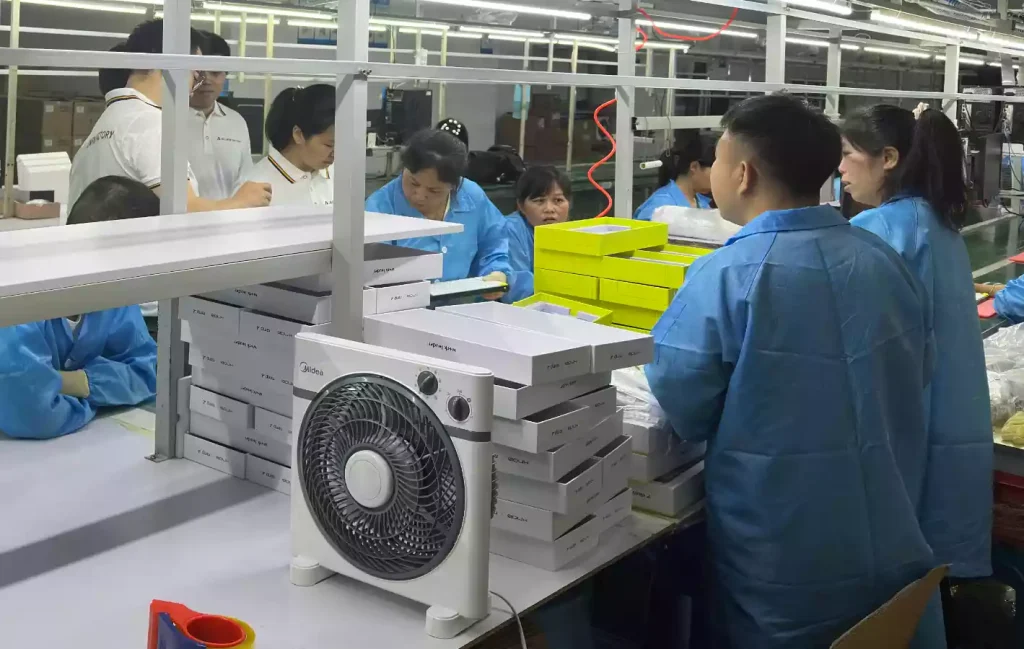
2. Integration of Advanced Technologies
Future mechanical keyboards will increasingly combine "mechanical precision" with "smart features." Hengcang is preparing for this trend through:
- Wireless Technology: Its patented 2.4G/BT 5.3 dual-mode connectivity reduces latency to <1ms (critical for gaming) and extends battery life to 120 hours.
- Smart Sensors: ODM projects for health-focused brands include built-in wrist pressure sensors (alerting users to poor posture) and keystroke frequency trackers (preventing repetitive strain injuries).
- AI Optimization: The company is developing AI-driven switch calibration—where keyboards learn user typing habits and adjust tactile feedback automatically.
3. Sustainable and Eco-Friendly Manufacturing
With global demand for sustainability rising, Hengcang is integrating eco-friendly practices into OEM/ODM operations:
- Recyclable Materials: 60% of ODM keyboard shells now use recycled aluminum or biodegradable plastic (meeting EU CE and US EPA standards).
- Waste Reduction: The aluminum extrusion process reduces production waste by 30% compared to traditional machining.
- Energy Efficiency: Hengcang’s factories use solar-powered production lines, cutting carbon emissions by 25% for OEM orders.
Insights from Hengcang’s Development: A Model for Chinese Manufacturers
Hengcang’s journey from OEM to ODM to OBM offers valuable lessons for Chinese manufacturing enterprises looking to upgrade their position in the global value chain:
1. Technical Accumulation Is the Foundation
Whether in OEM (meeting strict client standards) or OBM (building brand differentiation), patents and technical expertise are non-negotiable. Hengcang’s 19 patents were not acquired overnight—they resulted from 5+ years of R&D focused on solving real user pain points (e.g., heavy keyboards, fragile shells).
2. Flexibility Is Key to Market Adaptation
By offering both OEM and ODM services, Hengcang has weathered market fluctuations: during periods of high demand for established brands, OEM sales stabilize revenue; during the rise of emerging brands, ODM services drive growth. This flexibility ensures the company remains resilient.
3. OBM Transformation Requires Patience
Hengcang’s gradual OBM approach—starting with niche markets and leveraging existing technical strengths—avoids the risks of "overextending" into unfamiliar territory. For manufacturers, OBM should be a long-term goal, not an overnight shift.
4. OEM, ODM, and OBM Can Synergize
These three models are not mutually exclusive. Hengcang’s OEM experience taught it mass production efficiency; its ODM work built design and user insight capabilities; both now support its OBM efforts. By integrating these strengths, the company creates a "virtuous cycle" of innovation.
Conclusion
Zhuhai Hengcang Electronic Technology’s journey—from a contract manufacturer to an innovative ODM provider and emerging OBM brand—exemplifies the evolution of China’s manufacturing sector. As the company continues to invest in R&D (with plans to add 10 more patents by 2025) and expand its OBM footprint, it is well-positioned to become a global leader in mechanical keyboard manufacturing.
For brands seeking reliable OEM partners, innovative ODM solutions, or consumers looking for high-quality mechanical keyboards, Hengcang represents the best of "China’s manufacturing"—and a glimpse into the future of "China’s creation."

